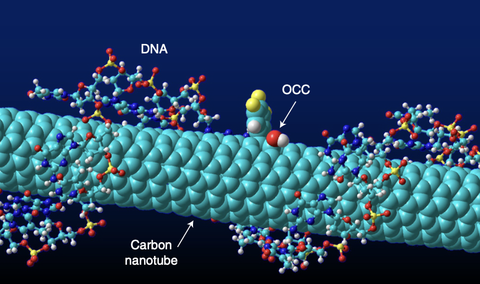
Discovering diseases early can mean successful treatment for patients, but many diagnostic tests aren’t sensitive enough for early detection. That’s why NIST researchers and collaborators are working on a different method, one that mimics our own senses.
Our sensory receptors grab hold of all chemicals to interpret the smells around us, not just one or two. The researchers’ method does the same, using millions of receptors made up of chemically modified carbon nanotubes wrapped in DNA. The receptors light up in different patterns when they interact with chemicals in blood plasma. Then, a machine learning algorithm analyzes those patterns to make a diagnosis.
It’s a stark contrast with most diagnostic tests currently used, which only detect a small number of specific, individual blood proteins. But the researchers have shown that their new perception-based method can detect ovarian cancer as accurately as the best diagnostic tests available today.
Collaborators include the Memorial Sloan Kettering Cancer Center, Weill Cornell Medicine, University of Maryland, Albert Einstein College of Medicine, Lehigh University and Hunter College High School.
Find more details in the full paper, published in Nature Biomedical Engineering.
Follow us on social media for more like this from all across NIST!

